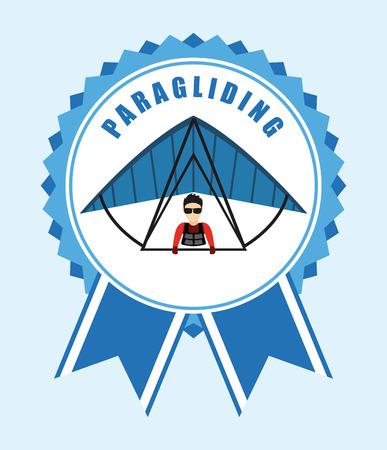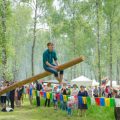Introduction to Garhwal Pandav Leela
In the serene embrace of the Himalayan foothills, where the rivers sing and pine forests whisper ancient tales, a unique folk tradition breathes life into the legendary saga of the Mahabharata. This is the world of Garhwal Pandav Leela—a vibrant theatrical celebration deeply rooted in the cultural and spiritual soil of Uttarakhand’s Garhwal region. Here, amidst terraced fields and cloud-kissed villages, the epic story of the Pandavas is not just remembered; it is lived, performed, and cherished by entire communities across generations.
The origins of Pandav Leela can be traced back centuries, woven seamlessly into the rhythms of rural Garhwali life. Unlike other forms of dramatic art that remain confined to stage or script, Pandav Leela spills out into village squares and temple courtyards, transforming these spaces into portals for divine storytelling. It is here, beneath starlit skies and swaying deodar trees, that the mighty deeds, struggles, and moral dilemmas of the Mahabharata find their echo among everyday people. In this slow-paced, immersive performance, time seems to stretch—allowing both performers and audience to forge a soulful connection with dharma (righteousness), devotion, and community wisdom.
Pandav Leela’s geographical roots are firmly anchored in Garhwal’s hills—where faith runs deep and traditions are fiercely preserved. The local dialects, folk music, and rituals blend harmoniously with the epic narrative, lending authenticity and emotional resonance to each enactment. Through this living art form, generations come together—not only to celebrate ancestral heritage but also to reaffirm their collective identity as custodians of a sacred legacy. In every verse recited and every drumbeat echoed across valleys, Garhwal Pandav Leela invites us to experience the Mahabharata as a living presence—timeless yet ever relevant in today’s India.
2. Cultural and Folk Heritage
Pandav Leela is not merely a performance in the Garhwal region; it is a living, breathing tradition that weaves together the social fabric of the local communities. Rooted in the mighty Himalayas, this folk theatre enacts stories from the Mahabharata, but its true essence lies in how it forms the backbone of Garhwali identity and intergenerational bonding. The practice of Pandav Leela is an annual event eagerly awaited by villagers, young and old alike. Through melodious dialogues, rhythmic dances, and community participation, children learn the values and beliefs cherished by their ancestors.
Transmission of Traditions and Values
Pandav Leela serves as a platform for teaching respect, bravery, devotion, and unity—qualities revered within Garhwali society. While elders take up significant roles or guide younger participants, every generation finds a place on stage or behind the scenes. This collaborative spirit strengthens family ties and communal harmony, making Pandav Leela more than just art—it becomes a vessel for passing down wisdom and customs.
Elements Strengthening Social Identity
| Element | Description | Impact on Community |
|---|---|---|
| Oral Narratives | Stories from Mahabharata are retold with local flavour. | Preserves language, accentuates cultural pride. |
| Collective Participation | Involvement across ages and castes. | Fosters inclusivity, bridges social divides. |
| Traditional Music & Dance | Use of dholak, damau, local ragas. | Keeps folk music alive, engages youth in heritage. |
| Intergenerational Mentorship | Elders mentor young artists. | Sustains continuity of customs, builds respect. |
The Role of Pandav Leela in Social Gatherings
The staging of Pandav Leela acts as a catalyst for social gatherings where families reunite and neighbours strengthen bonds. It transforms village squares into sacred spaces of storytelling and collective experience. As the tales unfold under starlit Garhwali skies, laughter mingles with reverence—reminding everyone that their roots run deep and their identity is resilient. In this way, Pandav Leela continues to be an invaluable conduit for both spiritual upliftment and social cohesion among Garhwali people.

3. Rituals and Spiritual Dimension
The Garhwal Pandav Leela stands as a profound testament to the region’s spiritual heritage, where every performance unfolds as an intricate tapestry of ritual and devotion. Before the enactment begins, villagers gather under the open sky or inside sacred community spaces, their hearts united in anticipation and reverence. The air becomes thick with the scent of incense and fresh marigold garlands, as local priests invoke blessings from their revered deities—Mahasu Devta, Nanda Devi, and other guardians of the hills. These prayers are not mere formalities; they are a living dialogue between the earthly and the divine, seeking protection and guidance for both performers and audience.
Central to the Pandav Leela is the collective chanting of mantras, often led by the eldest or most spiritually respected members of the community. As conch shells are blown and drums beat rhythmically, participants enter a meditative state, blurring the boundary between performer and spectator. The narrative unfolds through song, dance, and recitation—a devotional journey that echoes with generations of faith. The tales of the Pandavas are not just dramatized but relived with deep emotional investment; each gesture and word is infused with bhakti (devotion), transforming myth into lived experience.
This spiritual communion finds its zenith when offerings are made to local deities. Earthen lamps are lit, rice grains scattered, and prasad (blessed food) distributed among all present. Elders recount stories from Mahabharata interwoven with folk wisdom, reinforcing moral values and ancestral pride. In these moments, Garhwalis believe that divine presence descends upon their midst—blessing their land, crops, and kin.
Thus, Pandav Leela transcends mere entertainment. It becomes an annual pilgrimage for the soul—a reaffirmation of shared identity through rituals that knit families and neighbors together. Every chant, every prayer resonates beyond words, touching an ancient chord within each participant’s heart—reminding them that spirituality in Garhwal is not confined to temples but flourishes in communal harmony under the watchful gaze of their mountain gods.
4. Community Participation and Social Bonding
The Garhwal Pandav Leela is not merely a performance; it is a sacred gathering that brings the entire community together, transcending barriers of caste, age, and gender. In the heart of Uttarakhand, this folk art form weaves a vibrant tapestry of collective spirit, where every villager finds a role—be it as an artist, musician, storyteller, or enthusiastic participant. The rhythmic beats of the dhol and damau echo through Himalayan valleys, inviting all to join in celebration.
Central to the Leela is its open, participatory nature. Unlike rigid theatrical productions, Pandav Leela thrives on spontaneous involvement. Elders share ancient wisdom through dialogues; youngsters animate the scene with energetic dance; women sing soulful bhajans that uplift hearts. This inclusivity fosters a unique kind of social mingling, where relationships are strengthened and new bonds formed amidst laughter, song, and shared rituals.
The communal harmony witnessed during the Leela is not accidental—it is carefully nurtured by traditions passed down generations. Every performance becomes a mini festival: meals are cooked collectively, costumes are crafted by many hands, and stories are rehearsed together under starlit skies. Such collaborative efforts dissolve individual differences and nurture unity.
| Element | Role in Social Bonding | Cultural Impact |
|---|---|---|
| Music & Dance | Encourages participation from all ages | Creates joyful atmosphere & shared memories |
| Dialogue & Storytelling | Bridges generational gaps | Preserves oral history & moral values |
| Shared Rituals | Fosters collective responsibility | Strengthens communal identity |
Pandav Leela thus serves as more than entertainment—it becomes a sacred space for social healing and emotional connection. The slow pace of the narratives allows time for introspection and heartfelt conversations among villagers. As night deepens and flames flicker around the open-air stage, there emerges a sense of belonging—a reminder that in Garhwal’s hills, community is not just a word but a lived reality shaped through artful togetherness.
5. Artistic Expression: Music, Dance, and Costume
The Garhwal Pandav Leela is a living museum of folk artistry, celebrated not only for its narrative power but also for its vibrant artistic vocabulary. The performance draws audiences into a rhythmic tapestry woven from the region’s traditional music, dynamic choreography, and distinctive costumes. Each element—be it the hypnotic beats of dhol and damau or the soulful renditions of folk ballads—creates an immersive atmosphere that bridges centuries-old legends with contemporary community spirit.
Traditional Songs and Rhythms
At the heart of every Pandav Leela is music steeped in Garhwali tradition. Melodious tunes like “Jagar” are sung in reverence to ancestral spirits, invoking both divine blessings and emotional resonance among participants. Drums (dhol) and cymbals (manjira) set the rhythm for each scene, their tempo rising and falling with the story’s dramatic arc. These ancient rhythms are more than mere accompaniment—they pulse with cultural memory, inviting both performer and spectator to join in spiritual communion.
Choreography Rooted in Ritual
Pandav Leela’s choreography is a unique blend of drama and devotional ritual. Movements are often deliberate, echoing martial arts or mimicking everyday rural life, yet always infused with symbolic gestures that convey the moral struggles and triumphs of the Pandavas. Dancers move in circles or processions, mirroring cosmic cycles and reinforcing the interconnectedness of human fate and divine will—a subtle reminder of dharma at play.
Symbolic Attire: The Language of Costume
No Pandav Leela would be complete without its striking costumes. Performers don colourful turbans, handwoven woollen garments, and intricate jewelry passed down through generations. Every costume detail—whether the red scarf of Draupadi or the regal ornaments of Arjuna—carries symbolic meaning, instantly signalling character roles to the audience. These visual cues deepen engagement, transforming the open-air stage into a sacred space where myth comes alive through fabric and form.
Together, these artistic expressions infuse Garhwal’s Pandav Leela with a profound sense of place and purpose. They enable villagers to participate not just as spectators but as co-creators in a shared heritage, affirming identity while nurturing collective devotion—a testament to Indian folk art’s enduring spiritual and social significance.
6. Contemporary Relevance & Challenges
In the bustling tapestry of modern India, the Garhwal Pandav Leela continues to hold a unique place, resonating with both the spiritual yearnings and social fabric of local communities. As urbanisation and global influences sweep through the hills of Uttarakhand, this ancient folk art is challenged to remain relevant. Yet, its adaptability shines through, as communities find new ways to weave traditional narratives into today’s rapidly changing lifestyles.
The Leela in Modern Context
Pandav Leela has always been more than just a performance; it is a living tradition that binds generations together. In contemporary times, many young people migrate to cities for education or work, leading to fears that such traditions may fade away. However, local mandalis (troupes) have begun to incorporate elements of modern theatre—such as lighting, sound effects, and even snippets of Hindi or English—while staying true to the Garhwali roots. This fusion not only attracts younger audiences but also helps preserve the essence of the art form amidst change.
Adaptability and Evolution
The enduring power of Pandav Leela lies in its flexibility. The core stories from the Mahabharata are retold each year, but their interpretation often subtly shifts to reflect current social issues—be it migration, women’s empowerment, or environmental concerns. This responsiveness allows the Leela to act as a mirror for society, fostering dialogue and reflection among villagers.
Challenges in Preservation
Despite these adaptive measures, threats persist. The lure of digital entertainment and fast-paced urban life sometimes overshadows slow-paced cultural experiences like Pandav Leela. Funding and support from government bodies or NGOs are inconsistent, making it difficult for mandalis to sustain themselves. Moreover, there is a risk of cultural dilution as commercial interests occasionally push performers towards superficial spectacle rather than spiritual depth.
Strengthening Roots Amidst Change
To ensure its survival, elders and community leaders stress the importance of passing down rituals, music, and stories orally—much as their ancestors did. Some schools in Garhwal now include workshops on folk arts in their curricula, nurturing pride among children for their heritage. Social media platforms are also emerging as tools for spreading awareness about Pandav Leela beyond regional boundaries, connecting diaspora Garhwalis to their roots.
Ultimately, the journey of Garhwal Pandav Leela in modern times is one of balancing continuity with innovation. Its spiritual resonance offers solace in an era of rapid change, while its adaptability ensures that the leela’s flame continues to burn brightly across generations—reminding all who witness it of their shared past and collective hopes for the future.
7. Conclusion: The Continuing Legacy
As we pause and reflect on the enduring spiritual and social resonance of Pandav Leela in Garhwal, it becomes clear that this folk tradition is more than just a retelling of the Mahabharata. It is a living, breathing heritage that gently binds communities together, weaving threads of devotion, collective memory, and cultural pride. In the sacred air of Uttarakhand’s hills, each performance of Pandav Leela echoes with the voices of ancestors, reminding us of values rooted deep within Indian soil—dharma, unity, resilience, and faith.
While India strides rapidly into the future—embracing technology, urbanization, and global influences—the spirit of Pandav Leela continues to nurture cultural consciousness in both rural villages and urban hearts. It inspires younger generations to seek meaning in their roots, encouraging dialogues between tradition and modernity. With every drumbeat and chant during the Leela, one can sense the undying pulse of Garhwal’s identity—a reminder that our stories carry wisdom for today’s challenges.
Even as lifestyles shift and priorities change, Pandav Leela stands as a gentle yet powerful reminder: spiritual connection and social harmony are at the heart of Indian civilization. Its legacy endures because it adapts without losing its essence—offering solace, celebration, and a shared sense of belonging. The Leela invites us all to listen deeply, to honour our traditions while walking forward with open minds and compassionate hearts.


